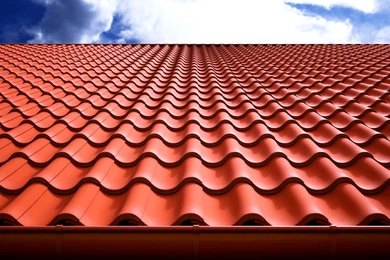Introduction
Deficiency in building materials can lead to costly repairs, poor aesthetics, and structural vulnerabilities. One solution? Ceramic tile cladding—a durable, stylish, and weather-resistant exterior finish. But what exactly is it, and why should you consider it for your next project?
In this guide, we’ll explore:
✔ What ceramic tile cladding is and how it works
✔ Its key benefits over traditional materials
✔ Installation methods and best practices
✔ Design ideas to elevate any space
By the end, you’ll understand why ceramic tile cladding is a game-changer for modern architecture.
What Is Ceramic Tile Cladding? (Definition & Basics)
Ceramic tile cladding refers to the process of covering walls, facades, or surfaces with ceramic tiles for protection and aesthetic enhancement. Unlike standard wall tiles, cladding tiles are engineered for exterior use, offering superior resistance to:
- Weather (UV rays, rain, frost)
- Impact (cracks, chips)
- Fire (non-combustible material)
How Does Ceramic Tile Cladding Work?
Cladding systems consist of:
- Tile panels – Prefabricated or custom-cut ceramic tiles
- Substrate – A backing board (cement, fiberglass, or metal)
- Adhesive & Grout – Weatherproof bonding agents
- Support Framework – Aluminum or steel rails (for ventilated facades)
This layered approach ensures durability, insulation, and moisture control.
Types of Ceramic Tile Cladding
| Type | Best For | Pros | Cons |
| Thin Porcelain Tiles | High-traffic exteriors | Lightweight, ultra-durable | Higher cost |
| Terracotta Cladding | Rustic, natural aesthetics | Eco-friendly, breathable | Requires sealing |
| Glazed Ceramic | Modern, colorful designs | Stain-resistant, easy to clean | Can be slippery when wet |
| Ventilated Facades | Energy-efficient buildings | Improves insulation, reduces condensation | Complex installation |
Why Choose Ceramic Tile Cladding? (Key Benefits)
✅ Durability – Resists fading, cracking, and extreme temperatures.
✅ Low Maintenance – Easy to clean, no repainting needed.
✅ Fireproof – Non-combustible (unlike wood or vinyl).
✅ Aesthetic Flexibility – Available in countless colors, textures, and finishes.
✅ Eco-Friendly – Made from natural clay, recyclable.
Ceramic Tile Cladding vs. Other Materials
| Feature | Ceramic Cladding | Brick | Wood | Vinyl |
| Lifespan | 50+ years | 100+ yrs | 20 yrs | 15 yrs |
| Maintenance | Low | Medium | High | Medium |
| Cost | $$ | $$$ | $$$ | $ |
| Fire Safety | Excellent | Good | Poor | Poor |
Installation Process: Step-by-Step
1. Surface Preparation
- Clean the substrate (remove dust, debris).
- Apply a waterproof membrane (if needed).
2. Tile Adhesion
- Use thin-set mortar or mechanical fixings.
- Ensure proper spacing (for expansion joints).
3. Grouting & Sealing
- Choose flexible, weather-resistant grout.
- Seal edges to prevent water infiltration.
4. Finishing Touches
- Inspect for alignment and gaps.
- Clean excess adhesive.
(Pro Tip: Hire a professional for large-scale projects to avoid costly mistakes.)
Design Inspirations for Ceramic Tile Cladding
1. Modern Minimalist
- Large-format tiles in neutral tones (white, gray).
- Sleek, seamless finishes for a clean look.
2. Industrial Chic
- Textured ceramic panels mimicking concrete or metal.
- Dark grout lines for contrast.
3. Mediterranean Vibes
- Terracotta tiles with earthy hues.
- Patterned layouts (herringbone, hexagonal).
FAQs About Ceramic Tile Cladding
❓ Is ceramic tile cladding expensive?
While initial costs are higher than vinyl, its longevity makes it cost-effective over time.
❓ Can it be used in cold climates?
Yes! Frost-resistant ceramic tiles are ideal for freezing temperatures.
❓ How do I maintain ceramic cladding?
Simply rinse with water or use mild detergent—no harsh chemicals needed.
Final Thoughts: Is Ceramic Tile Cladding Right for You?
If you seek a durable, stylish, and low-maintenance exterior solution, ceramic tile cladding is a top contender. Whether for homes, offices, or commercial buildings, its versatility and performance make it a smart investment.
Ready to upgrade your facade? Consult a cladding specialist today!


Leave a Reply